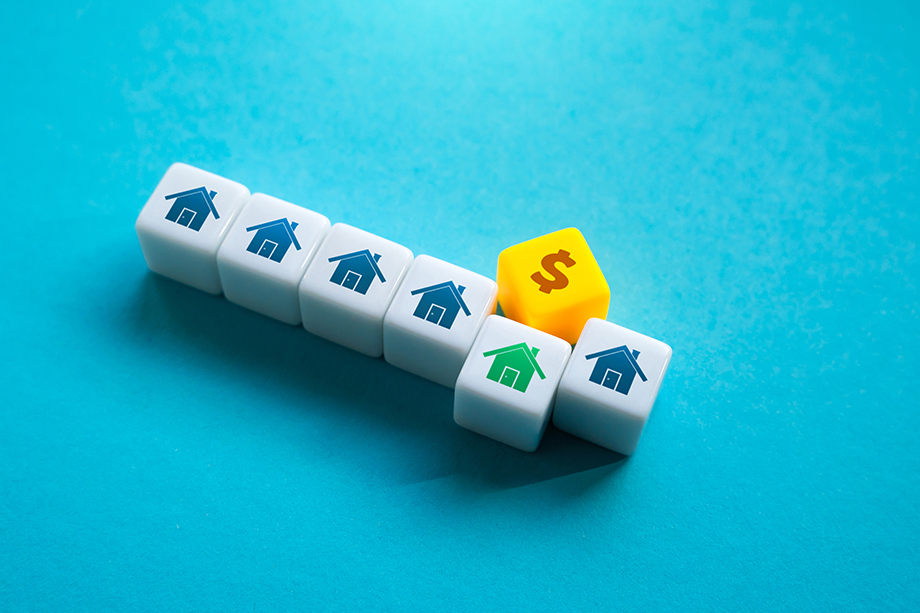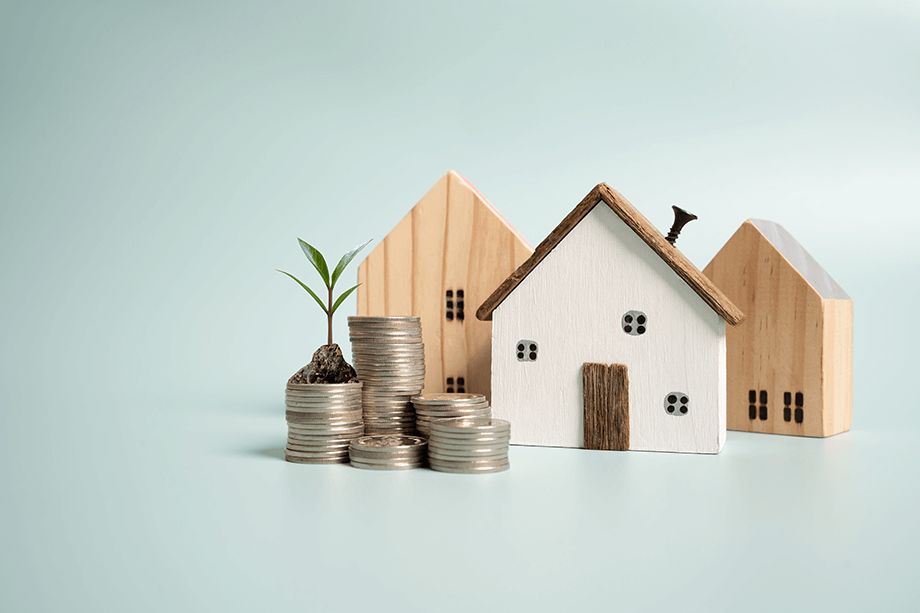In real estate investing, the concept of “infinite returns” represents the ultimate achievement: earning ongoing income and appreciation from a property while having zero personal capital invested in it. The definition is simple—infinite returns are achieved when an investor no longer has any money in a deal but continues receiving benefits like cash flow and appreciation.
The mathematics behind infinite returns reveal why this strategy captivates investors. If someone earns $1 on a $10 investment, the return is 10 percent. But earning $1 on a $0 investment creates an infinite return, since dividing any number by zero equals infinity. In real estate investing, investors can literally pull all their initial investment back out of a property while continuing to earn cash flow, appreciation, and tax benefits.
This isn’t theoretical mathematics—it’s a proven wealth-building strategy that successful investors like Robert and Kim Kiyosaki have used to build their fortunes. made their wealth through real estate by mastering the art of infinite returns, creating portfolios where properties generate continuous cash flow without tying up their capital.
Why cash flow beats capital gains when it comes to infinite returns
Of course, while there is money to be made through capital gains, it’s also important to note the risks. First, it’s a formula you have to keep repeating over and over again — you have to keep buying and selling, buying and selling, and buying and selling, or the income stops. Second, if the real estate market takes a nosedive, “flippers”— people who buy a real estate property and quickly turn around and sell it for a profit — can get caught with inventory they can’t sell.
These are the risks that lead many to consider cash flow through rental properties.
- Appreciation. If you buy a property at the right time (when prices are low), and the value increases, and you sell at the right time, then you will make a profit (capital gains). Sure, that may seem like a lot of “ifs,” but it’s far from a rare occurrence. If you’re in it for the long haul, you’ll often be rewarded—savvy investors will tell you that the longer you keep an investment property, the greater its value will grow. Real estate almost always appreciates in the long run. When searching for properties to invest in, be sure to research the appreciation potential.
- Rental income. Successful rental properties provide real estate investors with a steady cash flow — and as you know, cash flow is king.
Cash flow is realized when you purchase an investment and hold onto it. If you aren’t familiar with the concept, cash that flows in every month without you working for it is produced by investments, or assets, generating cash flow. That cash flow is also called passive income — it’s the primary focus in building infinite wealth. It’s literally the “secret” to how to get rich in real estate.Just like in the game of Monopoly, your tenants will pay rent each month, and this rental income goes directly to you. It’s no surprise that choosing the right rental property and tenants will maximize your rental income and boost your returns. Once you have a positive cash flow from a property (one that covers your mortgage and any other expenses), you can use the monthly rental income to reinvest and expand your real estate investment business. Then, you’ll buy more properties and gain a positive cash flow on those, too.Don’t limit yourself to only thinking about houses—you can buy apartment buildings, warehouses and office buildings too. Your goal should be to have a 100% return on your investment because once you’ve achieved that, you are playing with what we at Rich Dad like to call free money. Why? You no longer have any of your own money tied up in the deal. You still own the property, you have your original investment back, and cash is still flowing to you each month. Now doesn’t that sound like the ultimate return? It’s actually an infinite return!In fact, this is exactly how both Robert and Kim Kiyosaki made their fortune. - Bonus depreciation.
It’s almost as if our government wants to make it easier for you to figure out how to get rich in real estate. Thanks to the Tax Cuts and Jobs Act of 2017 (TCJA), landlords can deduct 100 percent of the cost of personal property they purchase for their business. Landlords can use this bonus depreciation to fully deduct the cost of personal property they use in their rental activity — including appliances, laundry and gardening equipment, and even furniture. This law changes again in the 2023 tax year (when it starts decreasing and will eventually be phased out by 2027), so now is the time to take advantage. - Pass-through tax deduction.
The TCJA created a new tax deduction for income earned through passthrough entities. Since most rental properties are owned by passthroughs — such as individuals, limited liability companies, partnerships, or S corporations — most rental property owners can benefit from this new deduction, which could result in thousands in tax savings. The amount of the deduction depends on a landlord’s total taxable income, and, for most landlords, the value of their rental property — it can never exceed 20% of a taxpayer’s total taxable income for the year. - Ancillary services.
Think back to the last time you stayed at a hotel—you were probably hit with a “resort fee” if they have a pool, and charges for the minibar if you had a late-night craving. This is how hotels make extra money — and another glimpse into how to get rich in real estate. Well, you can do the same as a real estate investor. If you own an apartment or office building, you could bring in extra cash by charging for covered parking spots or installing vending machines. Upgrading apartment units with new appliances and granite countertops could allow you to raise rent.
In short, using cash flow to invest in new properties = infinite returns; and we’ll discuss how to calculate cash flow potential later in this article.
The power of infinite returns: Why this strategy changes everything
Infinite returns fundamentally transform how investors build wealth. Instead of needing new capital for each property purchase, investors can recycle the same initial investment across multiple properties, exponentially expanding their portfolios.
The reason infinite returns are so powerful is because investors can use the same funds over and over again. Consider an investor who puts $100,000 into a property, then recovers that full amount through refinancing while maintaining ownership. That same $100,000 can then fund a second property, then a third, then a fourth—each time retaining ownership and cash flow from previous investments.
The compounding effect creates extraordinary wealth. An investor earning $10,000 annually from their first property can recover their investment and deploy it again, effectively doubling their return to $20,000 annually from the same initial capital. Add a third property, and the annual return becomes $30,000—all from the original $100,000 investment.
This strategy offers several distinct advantages:
- Accelerated portfolio growth: Investors scale their portfolios faster without waiting to save additional capital for down payments.
- Reduced risk exposure: Once the initial capital is returned, investors technically can’t lose money—everything from that point represents true gains.
- Maximum capital efficiency: The same dollars work across multiple properties simultaneously, maximizing the productivity of every investment dollar.
- Continuous cash flow (of course): Each property continues generating monthly income even after capital is recovered, creating multiple income streams from a single initial investment.
How infinite returns work: The complete strategy
Achieving infinite returns requires understanding real estate’s unique advantage over other investments. Real estate allows investors to borrow money against it relatively cheaply at high loan-to-value ratios, and investors can force appreciation through property improvements.
The process follows a strategic sequence:
Step 1: Strategic property acquisition
Success begins with purchasing properties below market value or with significant improvement potential. Investors target distressed properties, foreclosures, or properties in appreciating neighborhoods where renovations can create substantial equity.
Step 2: Value creation through improvements
Strategic renovations increase property value beyond the cost of improvements. This forced appreciation creates equity that didn’t exist before. Unlike stocks or bonds that appreciate based on market forces, real estate investors control value creation through smart improvements.
Step 3: Income generation
Once improved, properties are rented to qualified tenants, generating monthly cash flow. This rental income typically covers mortgage payments, property expenses, and provides additional profit. The property becomes a cash-flowing asset while continuing to appreciate.
Step 4: Strategic refinancing
After creating value and establishing rental income, investors refinance based on the property’s new higher value—not the original purchase price. Through cash-out refinancing, investors can pull their initial investment back out while maintaining ownership, cash flow, and equity.
Step 5: Rinse and repeat
The recovered capital funds the next property purchase, repeating the cycle. The first property continues generating income and appreciating while the second property undergoes the same process. This creates the “infinite” aspect—continuously recycling the same capital across an expanding portfolio.
The BRRRR method: The path to infinite returns
The BRRRR method—Buy, Rehab, Rent, Refinance, Repeat—has become synonymous with infinite returns in real estate investing. This strategy involves buying a property, rehabbing it, renting it out, and refinancing to pull out the original investment plus any additional equity built up, allowing investors to repeat the process with new properties.
Buy: Finding the right properties
BRRRR success starts with finding properties that meet specific criteria. The 70% Rule helps ensure investors don’t overpay —the maximum offer should not exceed 70% of the after-repair value minus repair costs. For example, if a property’s after repair value is $300,000 and repairs cost $50,000, the maximum purchase price should be $160,000.
Investors should look for:
- Properties priced 20-30% below market value
- Distressed properties needing cosmetic improvements
- Properties in improving neighborhoods
- Homes with good rental demand potential
Rehab: Strategic value creation
Renovations should focus on improvements that maximize property value and rental appeal without over-investing. Keep renovation budgets around 10% of property value, focus on making properties livable and safe, and add a 20% buffer for unexpected costs.
High-value improvements include:
- Kitchen and bathroom updates
- Fresh paint and flooring
- Curb appeal enhancements
- Energy-efficient appliances
- Modern fixtures and finishes
Rent: Generating cash flow
A good rule of thumb is the 1% rule—monthly rent should equal at least 1% of the home’s value or purchase price. A $300,000 property should generate at least $3,000 monthly rent.
Successful rental strategies require:
- Thorough tenant screening
- Competitive but profitable rent pricing
- Professional property management (or systems for self-management)
- Proper lease agreements
- Preventive maintenance programs
Refinance: Recovering your investment
Once the property is improved and generating rental income, investors refinance using the increased value. Conventional mortgages typically allow refinancing up to 75-80% of the new appraised value. If renovations created sufficient equity, investors can recover their entire initial investment—achieving the zero-dollar-invested milestone.
Repeat: Scaling the portfolio
This approach allows investors to turn one property into five, then ten, then more—one well-executed deal at a time. Each successful BRRRR cycle adds another cash-flowing property to the portfolio while freeing capital for the next investment.
Real estate syndications: Passive infinite returns
Not all investors want the hands-on involvement of the BRRRR method. Real estate syndications offer a passive path to infinite returns. Syndication deals involve sponsors buying apartment buildings or commercial properties, renovating them, raising rents, and refinancing to return some or all of investors’ initial capital.
How syndications create infinite returns
Sponsors identify large multifamily properties or commercial buildings with improvement potential. They raise capital from passive investors (limited partners), purchase and renovate properties, increase rental income, and refinance based on increased value.
Upon refinancing, sponsors return some or all of investors’ initial capital while investors keep their equity interest in the property, continuing to earn cash flow and appreciation.
Benefits of syndication investing
- Professional management: Experienced teams handle all property operations, from acquisitions to renovations to tenant management.
- Larger scale: Investors access commercial properties and apartment complexes typically requiring millions in capital.
- Diversification: A single investment might include dozens or hundreds of units across multiple buildings, spreading risk.
- Tax Advantages: Syndications provide depreciation benefits and other tax advantages similar to direct ownership.
- Time Freedom: Passive investors earn returns without property management responsibilities, tenant issues, or renovation oversight.
Multiple paths to achieving infinite returns
Beyond BRRRR and syndications, several strategies can lead to infinite returns:
No-money-down purchases
Some investors achieve infinite returns through no-money-down purchases where they purchase properties without down payments. Methods include:
- Seller financing arrangements
- Lease options transitioning to ownership
- Partner funding where partners provide capital in exchange for equity splits
- Hard money loans covering full purchase and renovation costs
Other People’s Money (OPM)
Rich Dad education emphasizes using Other People’s Money to fund real estate investments. Strategies include:
- Private money lenders providing acquisition capital
- Joint venture partnerships
- Home equity lines from existing properties
- Self-directed IRA investments
- Business credit for investment purposes
Value-add commercial properties
Commercial properties offer infinite return opportunities at larger scales. Investors purchase underperforming apartment complexes, retail centers, or office buildings, implement improvements and professional management, increase rental income, and refinance to recover initial investment while maintaining cash-flowing assets.
Cash flow: The foundation of infinite returns
As mentioned earlier, cash flow is king in real estate investing, and infinite returns magnify this principle’s power. Positive cash flow ensures properties generate income exceeding all expenses, including mortgages, property taxes, insurance, maintenance, and property management.
Calculating cash flow potential
Monthly cash flow equals:
- Gross rental income
- Minus mortgage payments
- Minus property taxes
- Minus insurance
- Minus maintenance reserves (typically 10% of rent)
- Minus property management (typically 8-10% of rent)
- Minus vacancy allowance (typically 5-8% of rent)
Properties should generate positive cash flow from day one, even before achieving infinite returns. Once investors recover their initial investment, every dollar of cash flow represents pure return on zero invested capital.
Tax benefits amplify infinite returns
Real estate offers unique tax advantages that complement infinite return strategies:
Depreciation
The IRS allows depreciation deductions on investment properties—typically 27.5 years for residential properties and 39 years for commercial. Thanks to the Tax Cuts and Jobs Act of 2017, landlords can deduct 100 percent of the cost of personal property they purchase for rental activities, including appliances, equipment, and furniture.
Pass-through deduction
The TCJA created a new tax deduction for income earned through pass-through entities like LLCs, partnerships, or S corporations—most rental property owners can benefit from this deduction, which could result in thousands in tax savings.
Capital gains treatment
When properties eventually sell, profits typically qualify for lower capital gains tax rates rather than ordinary income rates.
1031 Exchanges
Investors can defer capital gains taxes indefinitely by exchanging investment properties for like-kind properties, continuously upgrading portfolios without tax consequences.
These tax advantages become particularly powerful when combined with infinite returns, since investors earn income and benefits without capital tied up in properties.
Risks and challenges of infinite returns
It’s important to stay realistic here. While infinite returns offer tremendous wealth-building potential, investors must understand and manage inherent risks:
- Refinancing challenges: Market conditions, property values, and lending standards affect refinancing ability. Economic downturns might prevent refinancing at desired loan-to-value ratios, leaving more capital invested than planned.
- Renovation cost overruns: Property improvements frequently exceed initial budgets. Unexpected issues like structural problems, code violations, or contractor delays can significantly impact returns.
- Vacancy and tenant issues: Properties don’t generate cash flow without tenants. Extended vacancies, non-paying tenants, or property damage can create negative cash flow situations.
- Market fluctuations: Real estate markets cycle through ups and downs. Purchasing during market peaks or selling during downturns can impact returns significantly.
- Overleveraging risks: Aggressive refinancing to recover maximum capital increases mortgage debt and monthly payments. This can create cash flow problems if rental markets soften.
- Capital requirements: Investors still need initial capital—down payments for rental properties could cost $50,000 or more, plus closing costs and renovation funds.
Strategies for maximizing infinite returns success
Due diligence is critical
Successful investors thoroughly research markets, properties, and numbers before investing. This includes:
- Comprehensive property inspections
- Accurate renovation cost estimates
- Realistic rental income projections
- Conservative expense calculations
- Market trend analysis
Build a strong team
Real estate success requires reliable professionals:
- Investor-friendly real estate agents
- Experienced contractors
- Property managers
- Mortgage brokers specializing in investment properties
- Real estate attorneys
- Accountants understanding real estate taxation
Start with education
Rich Dad offers free investing classes teaching strategies for funding investments without using personal capital and creating major cash flow. Financial education provides the foundation for investment success.
Conservative underwriting
Experienced investors use conservative assumptions:
- Estimate high on expenses
- Estimate low on rental income
- Plan for higher vacancy rates
- Build in cushions for unexpected costs
- Don’t assume best-case scenarios
Focus on cash flow first
Properties should generate positive cash flow from the start. Positive cash flow protects against market downturns, provides reserves for repairs, and ensures properties remain profitable even if refinancing plans change.
Real-world infinite returns examples
Example 1: Single-family BRRRR
An investor purchases a distressed property for $120,000, invests $30,000 in renovations, and has $15,000 in closing costs and carrying costs—total investment of $165,000.
After renovations, the property appraises for $220,000 and rents for $1,800 monthly. The investor refinances at 75% loan-to value ($165,000), recovering the entire initial investment.
The property generates $400 monthly net cash flow. The investor now has:
- Zero dollars invested
- $400 monthly income ($4,800 annually)
- Infinite return on investment
- $55,000 in equity (25% of $220,000)
- Original $165,000 to invest in the next property
Example 2: Syndication investment
An investor puts $100,000 in a passive real estate syndication for a 10% ownership stake. Over the next few years, their initial capital is returned while they keep the 10% stake, continuing to receive distributions and cash flow based on their ownership percentage.
If the property generates $100,000 in annual distributions and the investor owns 10%, they receive $10,000 annually with zero capital invested—an infinite return.
Example 3: Small multifamily
An investor purchases a fourplex for $400,000 with $100,000 down, invests $50,000 in improvements, with total investment of $150,000.
After improvements, each unit rents for $1,200 ($4,800 total monthly). The property appraises for $480,000. The investor refinances at 70% loan-to-value ($336,000), paying off the original mortgage of $300,000 and recovering most of their
investment.
Net capital remaining: approximately $25,000 (instead of $150,000) Monthly net cash flow: $800 Annual cash-on-cash return on remaining capital: 38.4%
While not technically infinite (some capital remains), this demonstrates how refinancing dramatically improves returns.
Creative infinite return strategies
House hacking
Investors purchase 2-4 unit properties, live in one unit, and rent others. The rental income covers most or all mortgage payments. After building equity through property improvements and appreciation, investors move to their next house hack while converting the first property to a full rental, refinancing to recover their down payment.
Short-term rental conversion
Properties purchased as long-term rentals can be converted to short-term vacation rentals using platforms like Airbnb or VRBO. Higher nightly rates often generate 2-3 times the income of traditional rentals, accelerating equity building and enabling faster refinancing.
Commercial to residential conversions
Investors purchase commercial buildings and convert them to residential units. These conversions often create significant value, with properties refinancing at much higher values than the purchase price plus conversion costs.
Land development
Purchasing raw land, adding improvements like utilities and roads, subdividing into lots, and selling or developing individual lots can generate returns exceeding initial investment, recovering all capital while retaining some lots for future appreciation.
Scaling your infinite returns strategy
Once investors master infinite returns on single properties, scaling becomes the path to significant wealth:
Systematic approach: The BRRRR method works best when applied consistently—investors don’t need more cash, they need a smarter strategy. Create systems and processes making each deal smoother than the last.
Team expansion: As portfolios grow, professional teams become essential. Property managers handle day-to-day operations, allowing investors to focus on acquisitions and strategy.
Financing relationships: Building relationships with multiple lenders provides funding flexibility. Some investors work with:
- Local banks for portfolio loans
- Hard money lenders for acquisition and renovation
- Conventional lenders for refinancing
- Private money lenders for bridge financing
Market Diversification: Investing across multiple markets reduces risk from localized economic downturns. Many successful investors own properties in 3-5 different markets, each with different economic drivers.
Property Type Diversification: Beyond single-family homes, investors can pursue:
- Small multifamily (2-4 units)
- Large multifamily (5+ units)
- Commercial properties
- Industrial properties
- Self-storage facilities
- Mobile home parks
Each property type offers unique advantages and challenges, and diversification creates portfolio stability.
Learning from rich dad: The philosophy behind infinite returns
Robert Kiyosaki’s Rich Dad education emphasizes principles that make infinite returns possible:
Assets vs. liabilities
Rich Dad philosophy teaches that assets put money in your pocket while liabilities take money out. Real estate generating positive cash flow represents true assets, especially when achieving infinite returns.
Financial education over traditional education
Traditional schools don’t teach wealth-building strategies. Rich Dad financial education focuses on practical knowledge for building wealth through investing, business, and financial intelligence.
Using debt wisely
Rich Dad education distinguishes between good debt and bad debt. Good debt purchases cash-flowing assets, while bad debt purchases depreciating consumer items. Real estate investors use good debt to acquire properties generating returns exceeding debt costs.
Continuous learning
Successful real estate investors never stop learning. They study markets, attend seminars, read books, listen to podcasts like Rich Dad’s StockCast with Andy Tanner, and continuously improve their knowledge and skills.
Start your path to financial freedom through infinite returns
Infinite returns represent more than an investing strategy—they embody a wealth-building philosophy. By continuously recycling capital across expanding portfolios while retaining ownership and cash flow from each property, investors create paths to financial freedom traditional employment cannot match.
The question isn’t whether infinite returns work—they’ve been proven by thousands of successful investors. The question is whether you’re ready to begin your journey toward building wealth through smart real estate investing.
The opportunity is real. The strategies are proven. The only question remaining is: Are you ready to begin?






